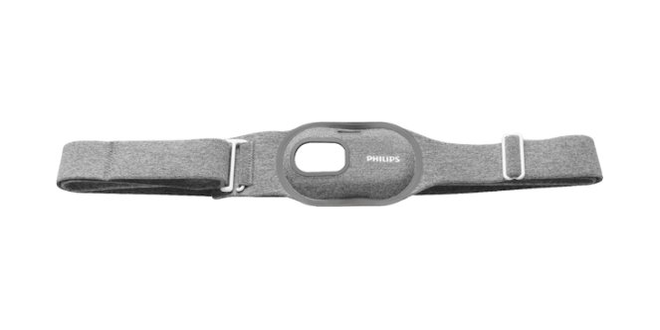When it comes to popular sleep positions (which include sleeping on your back, sleeping on your side, and sleeping on your tummy), side-sleeping is the most common. But the most common doesn’t necessarily have to mean the same as the absolute best or even the most recommended for you to try, according to a professional.
“There is a lot of misconception around the ‘best’ sleeping position,” says John Cronin, MD, Medical Leader of Sleep and Respiratory Care at Philips. “There really is no one best sleeping position, and the reality is that people need to move at night to readjust and relieve pressure on sensitive skin. Side sleeping isn’t always sustainable or comfortable through the entire night; each person needs to take pressure off the hips, knees and shoulders to redistribute pressure.”
So, if snoozing in a corpse-like position is what fits the bill for comfort for you, by all means, prioritize that. But, proceed with caution in knowing that there can be some consequences when it comes to back sleeping and respiratory flow—especially if you’re co-bedding with another person. “When [sleeping laying upwards], gravity pushes directly down on the tongue, mandible, and associated soft tissues, which can lead to more snoring and apnea,” say Dr. Cronin. “Some people only snore or have [sleep] apnea in that position.”
If you’re having trouble with snoring, you can consider checking out some of these anti-snoring devices to help. And if you suspect you may be dealing with sleep apnea, check in with a specialist. Otherwise, with the help of some props and positioning tips, you should be able to learn how to sleep on your back with little issue and, potentially, a lot more comfort.
How to sleep on your back and stay in alignment
“There are a range of options, like simply trying your best—which is hard to consistently achieve when you are asleep—and a more aggressive use of pillows to bolster a person’s knees and back,”says Dr. Cronin. “There are some over-the-counter body-positioners that may be helpful, although there is no evidence of a consistently superior tactic or device.”
Check out three of those body-positioning tips and tools below:
1. Use a pillow that isn’t raised high
“One principle that I focus on is a natural and ‘neutral’ spine position for normal sleep and function,” says Dr. Cronin. “When it comes to pillow height, we don’t want to have the neck in too much flexion—head forward—extension—head back—or a side-to-side tilt.”
That means if you’re sleeping on your back, it’s beneficial to keep your head closer to the mattress. A contoured pillow like this one should prop you up just right.
Shop Now: Elviros Cervical Memory Foam Pillow, Contour Pillows for Neck and Shoulder Pain, $53
2. Wedge in a pillow to support the knees
“The lumbar spine has a natural curve that flattens when legs are flat while sleeping on one’s back,” says Dr. Cronin. “This is improved when the knees are bent slightly, but this is a difficult position to maintain.”
With this in mind, a half pillow propped underneath your knees can make a world of difference.
Shop Now: Back Pain Relief Memory Foam Pillow, $24
3. Fall asleep on your back naturally, and get something to nudge you at night if you move
If you’re open to sleeping on your side, but being on your back helps you doze off, then you might want a device that can push you in the right direction for a silent night. As a reminder, a core concern associated with sleeping on your back is that it can lead to snoring. That’s where an anti-snoring device, like the Phillips SmartSleep Snoring Relief Band, can help. It allows you to fall asleep in your favorite position, and then uses adaptive vibrations and censors to get you to sleep on your side.
If you have a diagnosed sleep condition, like obstructive sleep apnea (OSA), Dr. Cronin recommends looking into a device like Philips NightBalance, another tool that helps those who suffer from OSA achieve a more desirable sleep position. This requires a prescription, so again, discuss with a medical professional if you believe something like this would be right for you.
Shop Now: SmartSleep Snoring Relief Band, $200
Factors to consider when training yourself into a new sleep position
In short: Don’t force it. Whether you’re trying to learn how to sleep on your back, your side, or your stomach. We typically don’t stay stationary when sleeping—and some move a lot more than others. (On average, we tend to move between 11 to 45 times during an eight-hour span.) so if you doze off pancake-style, you won’t necessarily stay that way anyway.
Be mindful, then, to what your body is saying. If you’re experiencing aches and pains, or your snoring is keeping your partner awake, it might be worth switching it up your sleep position. But don’t worry if you don’t adapt a new position right away. “I think that expectation-setting is key,” says Dr. Cronin. “Sleep is a new endeavor every single night, so it’s worth doing the work to get right for you and your needs when weighing the benefits versus the risks.”
Oh hi! You look like someone who loves free workouts, discounts for cult-fave wellness brands, and exclusive Well+Good content. Sign up for Well+, our online community of wellness insiders, and unlock your rewards instantly.
Our editors independently select these products. Making a purchase through our links may earn Well+Good a commission.


